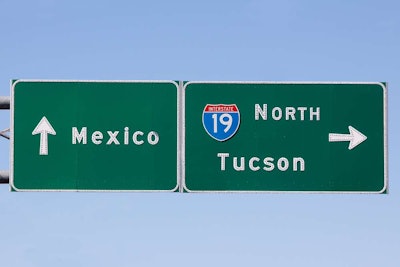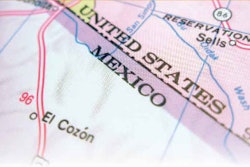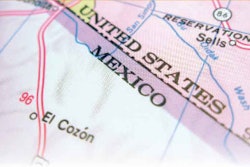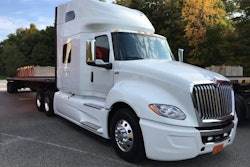
The United States-Mexico-Canada Agreement (USMCA), the newly announced trade deal meant to replace the North American Free Trade Agreement, will allow the U.S. more control over the existing cross-border trucking program by allowing it to cap the number of Mexican-domiciled carriers who can receive U.S. operating authority.
It will also allow the U.S. DOT opportunities to evaluate Mexican-based carriers who already have U.S. operating authority.
The new USMCA agreement also maintains the prohibition on Mexican-based carriers hauling freight between points within the United States. Mexican-based carriers who have U.S. authority cannot operate between two points in the U.S. That is, they cannot haul loads that originate and end in the U.S. They can only haul cross-border loads.
The original NAFTA, signed in 1994 by President Bill Clinton, called for the U.S. to set up a process for carriers to obtain operating authority in the U.S. and to haul cross-border loads beyond the designated commercial border zone. The Federal Motor Carrier Safety Administration, after a three-year pilot program, began in January 2015 allowing any Mexican-domiciled carrier to apply for U.S. authority.
However, a so-called annex within the USMCA deal gives the U.S. the authority to limit the number of carriers who can obtain U.S. authority. It even allows the U.S. to put a moratorium on granting authority to any more Mexican-based carriers. The annex allows U.S. regulators to make changes to the number of entrants to the cross-border program if they “determine that limitations are required to address material harm or the threat of material harm to U.S. suppliers, operators, or drivers.”
Mexican carriers that already have authority would be grandfathered in. According to FMCSA’s website, 41 carriers currently have authority to operate outside of the commercial border zone within the U.S. They’re limited to hauling only cross-border freight, however, and cannot haul a load that originates and ends in the U.S.
The USMCA would allow the DOT to evaluate those carriers’ authority when they have a “change in circumstance,” according to the text. One source familiar with the annex told Overdrive that such changes include if they increase their service within the U.S. or change ownership.
However, the U.S. is free to keep the open-application process as is. The USMCA changes only allow the U.S. to make changes to the cross-border program if it chooses to.
The USMCA deal was officially unveiled Monday morning. The U.S. and Mexico announced in early September the two countries had reached an agreement on a NAFTA rework, while Canada remained reluctant to join. However, Canada agreed to the terms late Sunday. The agreement now must be ratified by Congress and then signed by President Trump to take effect.
Trump said on Monday in an announcement about the USMCA that he is “not at all confident” that Congress will enact the trade deal, citing political divisions as the reason.











